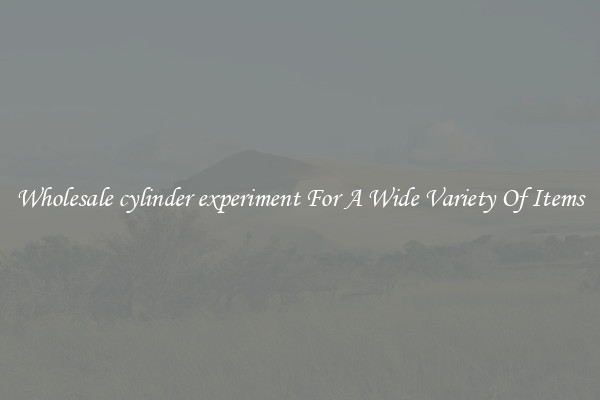Wholesale cylinder experiment For A Wide Variety Of Items
Wholesale cylinder experiments are a great way to test a wide variety of items in bulk quantities. This type of experiment allows researchers to gather data on how different factors, such as size, shape, material, and price, affect consumer behavior and preferences. By testing multiple items simultaneously in a wholesale cylinder, researchers can quickly evaluate which items are most appealing to consumers and make recommendations for future sales strategies.

One of the benefits of conducting wholesale cylinder experiments is that they can be conducted quickly and efficiently. By testing a large number of items at once, researchers can gather data on a wide range of products in a short amount of time. This allows for faster decision-making and implementation of marketing strategies based on the results of the experiment.
Another advantage of wholesale cylinder experiments is that they can be conducted with a wide variety of items. From household goods to electronics to clothing, researchers can test nearly any type of item in a wholesale cylinder. This allows for a comprehensive understanding of consumer preferences across different product categories.
Furthermore, wholesale cylinder experiments can help companies identify trends and patterns in consumer behavior. By collecting data on which items are most popular and why, companies can tailor their marketing strategies to better meet consumer needs and preferences. This can lead to increased sales and customer satisfaction in the long run.
In conclusion, wholesale cylinder experiments are a valuable tool for testing a wide variety of items in bulk quantities. By conducting these experiments, researchers can gather data quickly and efficiently, evaluate consumer preferences across different product categories, and identify trends in consumer behavior. This information can be used to inform marketing strategies and drive sales for businesses. Overall, wholesale cylinder experiments are a valuable tool for any company looking to gain insight into consumer behavior and make data-driven decisions.

View details

View details

View details

View details








